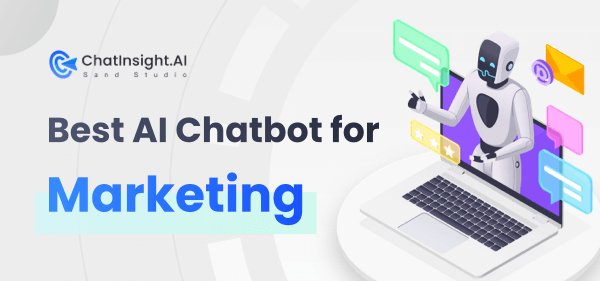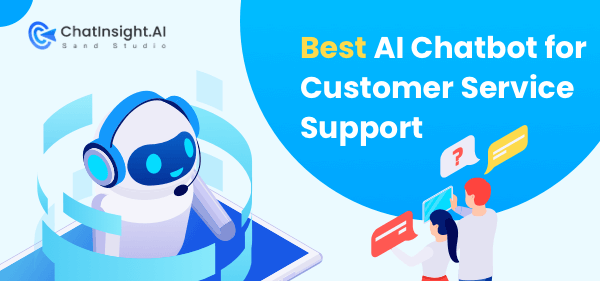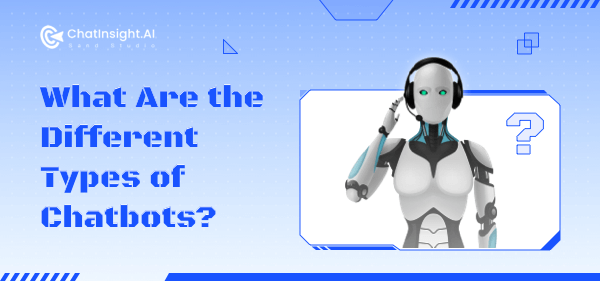Your Key to Success: How to Use AI In Business
AI is revolutionizing how businesses work by permeating various business functions and reshaping operational landscapes. From streamlining marketing efforts to optimizing human resources, organizations are increasingly adopting AI to automate tasks, enhance data analytics, and expedite intelligent decision-making.
Emerging trends in AI include generative AI, natural language processing (NLP) tools like ChatGPT, machine learning, and deep learning. Accenture's research indicates that 98% of global executives agree AI foundation models will play an important role in their business’ strategies in the next 3 to 5 years.
Contrary to the notion of replacing human roles, AI is positioned as a catalyst for efficiency, aiming to alleviate repetitive tasks and unlock human potential. The possibilities extend far beyond mere automation; AI empowers employees and businesses to work strategically across diverse industries.
This guide delves into why AI is indispensable for businesses and provides real-world examples of how AI, machine learning, and big data contribute to improved business practices.
- Part 1: The Growth of Artificial Intelligence for Business
- Part 2: How Can AI Help My Business?
- Part 3: Key Areas Where AI Can Be Implemented in Business
- Part 4: Integrate the Best AI Tool to Business
- Part 5: Real-Life Examples of AI Implementation in Business
- Part 6: Challenges and Considerations in AI Implementation
Part 1: The Growth of Artificial Intelligence for Business
For businesses, the volume of accessible data has surged exponentially. Exploding Topics states that 328.77 million terabytes of data are created each day in 2024. By utilizing emerging AI technologies, companies now harness user data for informed decision-making.
Recent years have witnessed a widespread embrace of AI among companies, aiming to optimize their existing data reservoirs. Consider the following trends:
- The global AI market is expected to reach a value of $638.23 billion in 2024.
- 79% of respondents in McKinsey's “The state of AI in 2023” survey report adopting AI.
- 4 in 10 organizations want to make a large investment in AI automation.
These figures underline the shift – AI is no longer experimental but an integral component for numerous global companies, fundamentally ingrained in their operational fabric.
Part 2: How Can AI Help My Business?
Businesses are set to revolutionize workflows by integrating AI models. The norm will involve humans collaborating with AI co-pilots, unlocking vast potential. Within each role, AI automation and assistance will reshape tasks, introducing new responsibilities like overseeing the ethical use of emerging AI-powered systems, marking a transformative shift in work dynamics.
1AI automation
According to a survey, 83% of companies use AI for more reliable and efficient work. Many businesses and companies are now turning to AI automation systems as they offer more efficiency and reliability.
From optimizing routine processes to providing valuable data insights, AI automation contributes to increased productivity, improved customer service, and informed decision-making.
Businesses benefit from reduced operational costs, enhanced cybersecurity, and the ability to focus human resources on higher-value, strategic activities.
2Customer Service and Support
AI tools, ML and data science have revolutionized the way businesses interact with their customers. Some of the positive impacts of AI on customer support are as follows.
Increased Response Time
The biggest advantage of AI customer support is the increased speed of handling customer inquiries. It reduces the response time by automating processes through chatbots and AI assistants.
According to a study, 80% of customers believe that AI could resolve their issues more efficiently. Automation minimizes the time customers spend waiting for assistance, leading to higher satisfaction.
Accuracy
AI-powered customer support provides accuracy and perfection with its ML and smart language processing. This continuous learning process not only reduces errors but also enhances the overall customer experience, contributing to increased satisfaction and confidence in the support services offered.
According to research, AI-powered customer service automation is expected to experience rapid growth, indicated by a projected compound annual growth rate of 58.5%. AI in customer support ensures reliable and accurate assistance, fostering positive interactions and customer relationships.
Support Experiences
The cumulative effect of improved accuracy, reduced errors, and continuous learning contribute to seamless support experiences for customers.
Customers receive accurate and relevant information promptly, enhancing their overall satisfaction with the support process.
3Data Analysis and Decision-Making
AI significantly uses data analysis and decision-making processes in business.
For decision-making, AI provides support by giving relevant information, making choices and work easier. It also helps businesses avoid problems by spotting risks early. In operations and supply chains, AI finds ways to work better and save money.
Almost 75% of the enterprises will move to AI production, which will increase the analytics 5 times more in 2024. In marketing, AI uses what it knows about customers to make advertisements more interesting.
4Automation and Process Optimization
According to recent studies, businesses leveraging AI-driven automation witness a significant boost in efficiency, with a reported 40% reduction in time spent on repetitive tasks.
This not only translates to time savings but also contributes to cost efficiency, as organizations can reallocate resources effectively. Moreover, AI's impact on process optimization is evident in its ability to analyze workflows and suggest improvements.
Part 3: Key Areas Where AI Can Be Implemented in Business
AI offers a diverse range of services to be implemented in businesses. According to research from McKinsey, about 50% to 60% of companies have deployed some AI tools. Some of the key areas where AI can be implemented in business are as follows,
Marketing and Sales
Many AI tools and machine learning algorithms are used by marketing teams to analyze and research data, implement strategies, follow the trends and enhance marketing campaigns.
According to research, many marketers believe that the increased benefit they have got is due to GenAI.
Some of the examples that how AI is used in marketing are as follows,
- Improved Audience Segmentation:
AI enhances the precision of audience segmentation by analyzing vast datasets to identify distinct customer groups based on behaviours, preferences, and demographic indicators.
- Personalization Advancements:
With AI tools, businesses can create detailed customer profiles, categorizing individuals into specific segments. This allows for tailored marketing strategies that highlight products, services, or promotions most relevant to each customer segment.
- Simplified Behavioral Tracking:
AI simplifies the tracking, understanding, and prediction of customer behaviours, providing marketers with actionable insights for targeted and personalized marketing efforts.
Customer Service
AI has transformed the way businesses deal with their customers. AI provides 24/7 support more concisely and reliably. AI-powered chatbots and virtual assistants automate customer interactions, providing instant support and resolving queries without human intervention.
It also handles a large volume of inquiries simultaneously, ensuring consistent and reliable support during peak demand. According to the study, 83% of businesses feel AI lets them assist more customers.
IT Operations
Almost 14.67% of IT leaders consider AI to be a Business Priority for all business holders. AI streamlines IT operations by automating routine tasks, diagnosing issues, and optimizing system performance. Predictive analytics helps in proactive problem resolution, minimizing downtime and enhancing overall IT efficiency.
Human Resources
An expert in HR said that AI will change the HR tech landscape. These AIs are embedded with many AI models and designs.AI helps HR as when companies get lots of job applications, AI can quickly look at their resumes and applications to figure out which ones match the job well.
This makes it easier for the HR team to focus on the most important parts when picking new employees. It coordinates with new employees by sending them the guidelines they need, like training materials. This means less paperwork and more time for HR to do important stuff.
E-commerce
AI powers recommendation engines, suggesting products based on customer behaviour and preferences. Chatbots provide instant customer support, enhancing the overall shopping experience.
Content Generation
According to a study, 85.1% of AI users use AI and CHATGPT for article writing and content creation.
It helps by using AI-driven tools, using natural language processing, and automating content creation for marketing materials, articles, and social media. This technology ensures consistent and engaging content, saving time for content creators.
According to Statista, a 2023 research study found that 73% of U.S. marketers stated that their organizations had used Gen AI tools, including chatbots, and chatbots, in their line of work to increase their business profit.
Part 4: Integrate the Best AI Tool to Business
For business owners and company holders, using other AI tools for their task automation, customer support and sales purposes may be a good option but ChatInsight offers more variety of options. Is your business looking to train a chatbot around your website, business and customer data? For such marketers, ChatInsight AI is the best chatbot out there.
ChatInsight offers many other services such as custom FAQs, industry-specific knowledge and product and services insights. It serves as a personal assistant and helps in maintaining business-customer relationships. Additionally, it also offers a marketing assistant to make your marketing strategies more efficient and reliable.
Part 5: Real-Life Examples of AI Implementation in Business
1Amazon
Amazon, the world's best e-commerce platform, uses AI for its task automation.
Some of how Amazon uses AI are as follows:
Product Recommendation
The best way Amazon uses AI is by providing personalized product recommendations to the visitor. As soon as the customer visits the website, its automated AI provides a list of products as a recommendation according to their previous purchasing history. It makes it easier for regular customers to browse their products easily and more efficiently.
Supply Chain Management
As many customers buy products from Amazon, it is difficult to manage and optimize the whole supply chain. For this amazon has used AI to optimize and enhance all the orders by predicting the demand for the products, and their optimization. ML uses a special mechanism to predict which product will be more in demand in future and makes it easier for the customers to receive the products on time.
Customer Service
Amazon's virtual assistant uses AI to support the customers with the best of its answers according to the customer's queries. It is integrated with some special instructions, it handles questions related to products, placing and replacing orders and providing information related to weather etc.
Amazon has managed to reduce the burden of human customer service by using this AI customer support and providing the best results more efficiently and accurately.
2Netflix
Netflix, the biggest entertainment platform uses AI for better program recommendations.
From 17 thousand shows, what made you want to watch a particular, one may be from a family friend but Netflix uses ML and AI integration with built-in data science programs.
Automated thumbnail generator
Netflix offers a built-in thumbnail generator, which provides a bunch of thumbnails for the recommended shows.
They offer a variety of shows, you may not be interested at the time, but they tend to attract the users' attention.
Streaming Quality
Watching countless shows on Netflix, with great quality video, has no compromise on Quality.
So you may be thinking about how AI plays its role in video streaming. Here comes Machine learning. The algorithms analyze user behaviour, network conditions, and device capabilities to optimize. streaming.
This allows adaptive bitrate streaming, adjusting video quality dynamically to ensure smooth playback without buffering. Additionally, machine learning helps in video compression, reducing file sizes without compromising quality, and optimizing bandwidth usage for a better streaming experience.
3Tesla
Tesla utilises AI in various aspects of their electric vehicles. AI plays a crucial role in Tesla's Autopilot feature, enabling capabilities like autonomous driving, lane-keeping, and adaptive cruise control.
Machine learning algorithms continuously improve these functions by learning from real-world driving data collected from Tesla vehicles globally. Additionally, AI is used in Tesla's energy products, such as the Powerwall and Powerpack, to optimize energy storage and consumption.
According to research Tesla's Autopilot leverages data from 100 million+ miles driven by their vehicles, contributing to ongoing improvements in technology.
Part 6: Challenges and Considerations in AI Implementation
Ethical Considerations and Data Privacy
AI algorithms and ML can make unfair decisions if not properly checked.
Ensuring AI systems treat all individuals and groups fairly, avoiding biases and disruptions that may lead to discrimination.
Making AI processes more understandable and interpretable, enabling users to comprehend how decisions are made.
For example, If AI is trained to recognise faces and most data shown is of white people. It will be more likely to recognise white people than the others. According to research, a black lady in New York came to know that AI is not recognising her face. This could be a racist-biased problem.
For a solution, one should test the AI algorithms again and again, and make sure that the decision-making process using AI systems is understandable and traceable, allowing for easier identification and rectification of biases.
Data Privacy:
Data is a private asset of a business and company. One should take proper measurements to make sure that their data is secured and uncrackable.
Sharing your information with AI chatbots and CHATGPT may be a threat to your data and information.
ChatGPT and similar AI models can use all the information you share when training their next iterations. This includes any proprietary or personally identifying information you include in your prompts. If users of a future model ask the right questions, they may gain access to the data you shared with an earlier model.
According to Samsung, they once shared their source code to make it better and perfect, but now OpenAI has access to all of their data.
Now AI has to put stricter rules and regulations to make sure that their data is secured.
Overcoming Implementation Hurdles
Data Quality:
AI systems rely heavily on the data they are trained on, and companies often face challenges in obtaining a sufficient quantity of high-quality data. This scarcity can lead to biased or discriminatory outcomes in AI operations, commonly referred to as the bias problem.
To address the bias problem proactively, it is advisable to commence the AI journey with simpler algorithms that offer a clearer understanding and greater control. This approach enables effective bias identification and modification, contributing to the development of fair and unbiased AI models.
Integration Issues:
Incorporating AI into your training program goes beyond just installing plugins. Ensure your infrastructure can support it and provide training for employees.
Partnering with an experienced AI provider helps overcome challenges for a smooth transition to machine learning.
One should Collaborate with a provider who has the necessary AI experience and expertise can help you overcome all these issues and guarantee the smoothest transition to machine learning possible.
Outdated Infrastructure:
Effective performance of Artificial Intelligence systems necessitates rapid processing of substantial data. This demands state-of-the-art infrastructure and processing capabilities. Unfortunately, several businesses still rely on outdated equipment unsuitable for the demands of AI implementation.
To truly revolutionize Learning and Development through machine learning, businesses must commit to investing in technologically advanced infrastructure, tools, and applications capable of meeting the requirements of AI processing.
Balancing AI with Human Expertise
To effectively integrate humans and AI in the workplace, a strategic approach is essential to optimize the strengths of both.
The companies must identify tasks suitable for automation, typically those that are repetitive and data-focused.
This allows human workers to concentrate on tasks requiring creativity and emotional intelligence, while AI handles routine functions.
Secondly, investing in training and upskilling for human workers is vital. This prepares them to navigate an AI-enhanced environment, enabling them to not only adapt to the evolving nature of work but also leverage AI tools to boost their productivity. It's important to view AI as a tool that enhances human capabilities rather than a threat.
This fosters an environment where humans and AI work together harmoniously.
Lastly, a people-first approach is essential. Organizations should ensure that AI integration doesn't negatively impact the well-being and job satisfaction of human employees. The aim is to establish a symbiotic relationship where humans and AI complement each other, resulting in improved efficiency, innovation, and overall organisational growth.
Take Away
AI is reshaping businesses, boosting efficiency and decision-making. AI excels in marketing, customer service, and operations, bringing time and cost savings. Choosing the right tool, like ChatInsight, is crucial. From customer service to content generation and marketing makes it easy for you to handle your business. Balancing AI with human expertise ensures a harmonious integration, fostering innovation and growth in businesses. It offers a variety of offers such as increased marketing revenue and improved engagement and optimization. So what are you waiting for?
Sign up today and create a chatbot for free!







Leave a Reply.